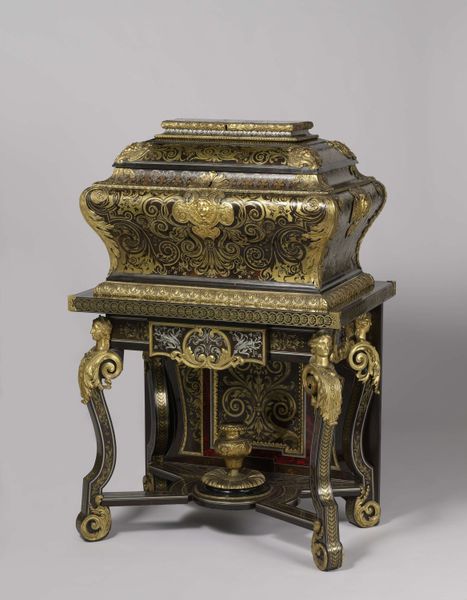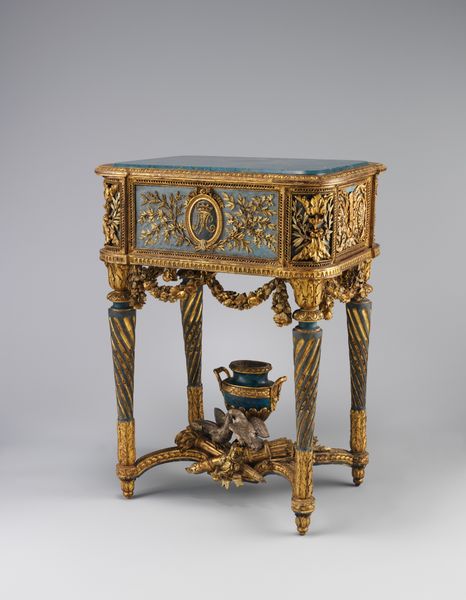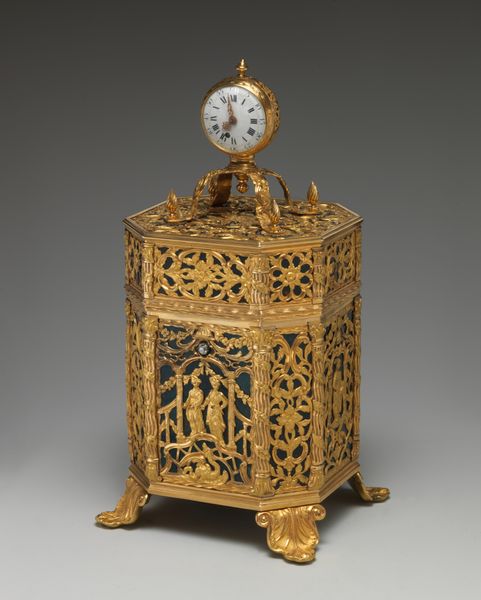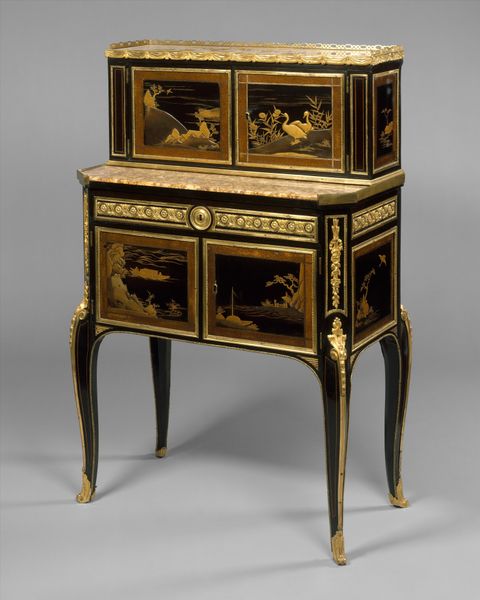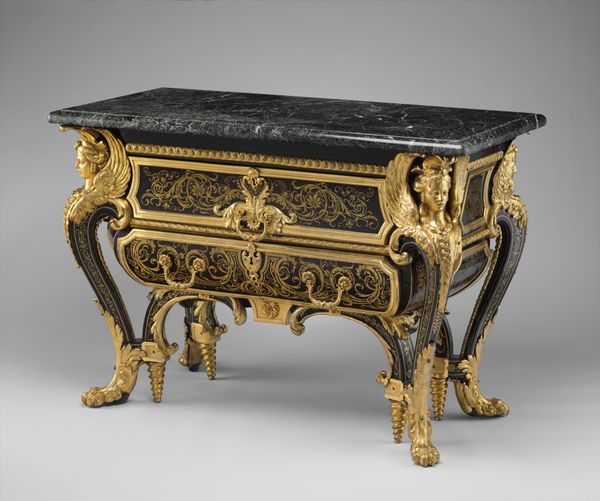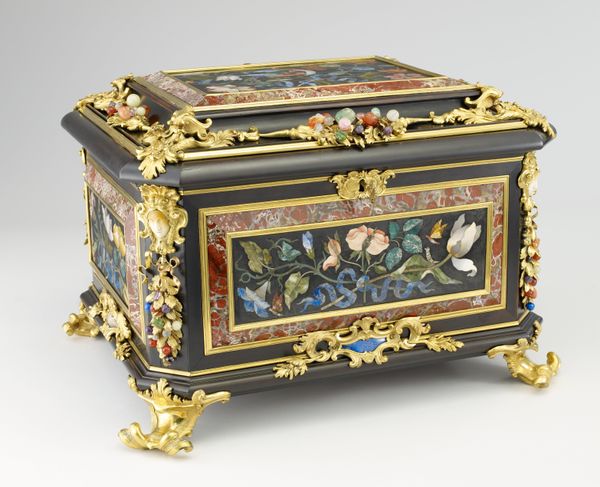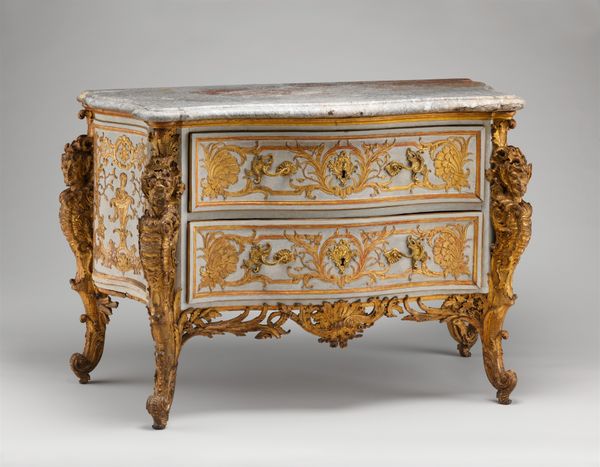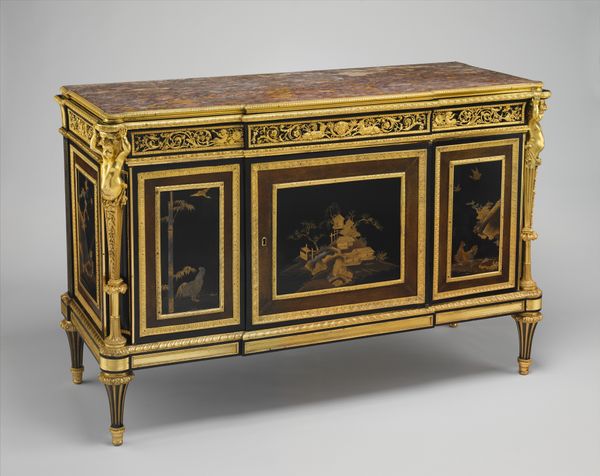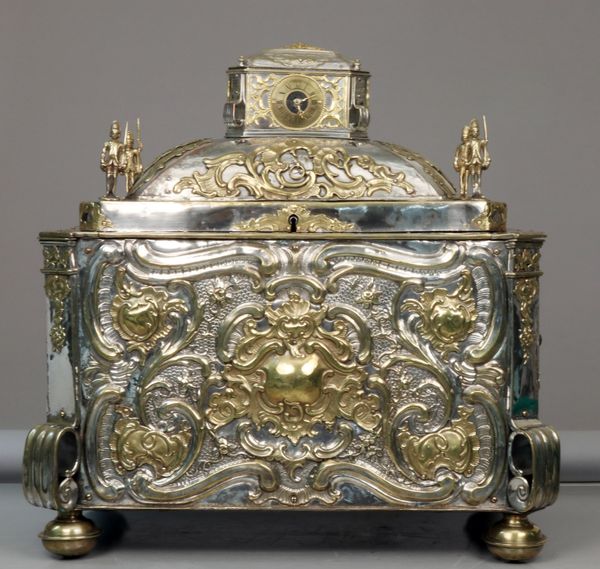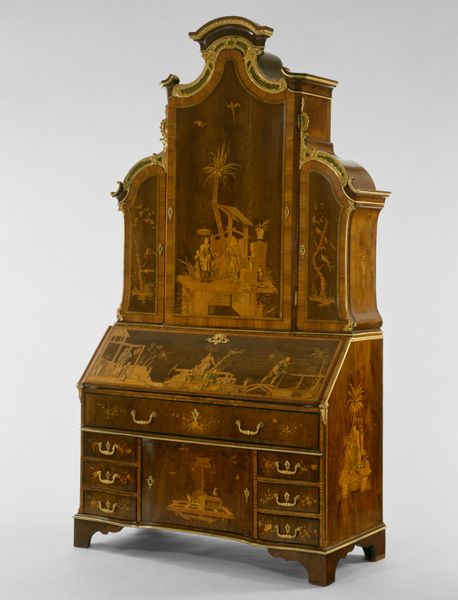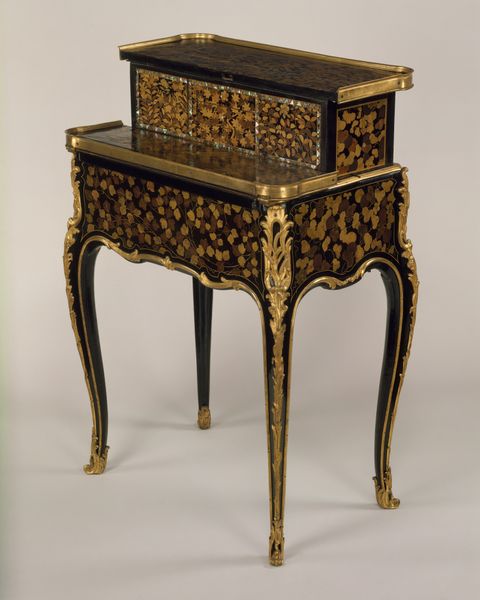
metal, sculpture, wood
#
baroque
#
metal
#
sculpture
#
furniture
#
sculpture
#
wood
#
decorative-art
Dimensions: height 138.3 cm, width 91.4 cm, depth 65.8 cm, height 83.6 cm, width 91.4 cm, depth 65.8 cm, height 55.2 cm, width 86 cm, depth 61 cm
Copyright: Rijks Museum: Open Domain
Curator: What strikes you first about these 'Two toilet caskets' crafted circa 1685-1690 by André Charles Boulle? Editor: The sheer opulence of the materials. Look at how wood and metal combine—the detailed marquetry contrasting against heavy gilded mounts. I'm curious about the labour and access required to acquire the precious materials to make such an object. Curator: Absolutely. Boulle was *the* cabinetmaker to Louis XIV, so access to the best materials, and workshop, would not be an issue. These caskets were luxury items for the court, objects intended to enhance the rituals around personal grooming, hence their purpose. Imagine the powdered wigs, the perfumes, all carefully arranged from within these caskets. Editor: Personal grooming taken to the level of ritualistic display... The layers of craftsmanship tell us about social expectations; appearances became almost a performance, reflected even in furniture design. The very detailed process speaks volumes. Curator: The Baroque style here isn’t just decoration. It reflects a courtly culture of display and centralized power. Each swirling detail, each shimmering metallic piece, serves to enhance that visual and cultural language. It signals status. Editor: Do you think it has similarities to other craft work made around the time period or is this a singular commission. Are we looking at 'art' or 'craft'? I wonder who made this? Was it Boulle himself or his workshop? And were there enslaved or underpaid people providing the raw materials or creating these luxurious pieces? Curator: It's all connected, of course. Boulle certainly designed the piece but oversaw the entire production process within his workshop, probably dividing labor for different artisans focusing on various areas of specialism. As for similarities, the general aesthetic chimes in with the fashions of Versailles – controlled splendor! However, while some may dismiss it as merely decorative, objects like this embody an artistry inseparable from its cultural impact. The elite controlling of design and production reflects wider systems of authority. Editor: I see the tight interweaving of craft and power. Thank you! Curator: A powerful object. And a beautiful object too.
Comments
rijksmuseum about 2 years ago
⋮
These caskets on stands probably served no practical purpose. They were made as works of art, to add lustre to a princely chamber. They are ornamented with marquetry of tortoiseshell and brass, supplemented with some pewter. Boulle specialized in this technique, which is known as boullework. The shape of the fittings accords well with the patterns of the marquetry.
Join the conversation
Join millions of artists and users on Artera today and experience the ultimate creative platform.
